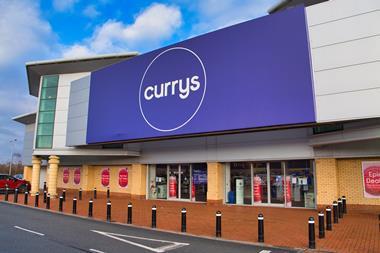Switching supply chain software can be tricky. Retailers from across the globe – including Musgrave and Carrefour – shared their experiences at a user event earlier this month. Joanna Perry reports
One operates hypermarkets in France, the other franchise convenience stores in the UK and Ireland. But, when it comes to their supply chain software, Musgrave and Carrefour are not so different.
They were two of the group of retailers that came together for Club Gold 2008 – the two-day user group event for customers running Aldata’s Gold suite of retail supply chain software. Although half the retailers in the room were French, the software is gathering an increasingly international user base, including UK and US retailers.
Musgrave and Carrefour are both in the middle of extensive implementations of new supply chain software. Their experiences are testament to how complex introducing and stabilising new supply chain systems can be; and how crucial the work done in the early stages of these projects is.
Musgrave group IT manager for Gold Alan Grainger told the audience about the business transformation project that the retailer has embarked on in order to simplify its processes and provide more business-critical information than has ever been available before.
The Musgrave Simplifies Retail project encompasses more than just the implementation of the Aldata Gold suite, but the software is important to the overall initiative. The suite is replacing trading systems in each of the company’s divisions. Once the project is finished, Grainger says Musgrave will have a uniform, leading-edge technology platform for the first time.
In June last year, Gold was implemented centrally in the Irish business. To complement this, Musgrave will begin a pilot of the store-based module, Gold Shop, in a number of its Irish stores this September. The implementation of the central and store modules will then continue division by division, with them being introduced to the UK business next.
To explain the reasons why the retailer chose to implement new supply chain software, Grainger said he had to go back to 2002, when the Musgrave business community was asking for more functionality from its IT systems. What was desired would have been expensive to produce in-house and, Grainger added, Musgrave is in the business of wholesaling rather than software development. Besides, even if the IT department made changes to the existing systems, not all additional requirements could have been met .
So Musgrave made the decision to search for a best-of-breed third-party system and considered several vendors’ products, including Aldata’s Gold suite. Most were discounted early on in the process and then Musgrave came up with “knock-out criteria” that the new system would have to fulfil if it were to support Musgrave’s operation properly. The company’s existing systems only scored 55 per cent against the criteria and a system from Lawson scored 60 per cent. Aldata Gold scored 80 per cent and was therefore chosen as the replacement.
Tried and tested
The bulk of the tailoring and testing of the software to make it fit Musgrave’s criteria as closely as possible took place before the roll-out to the Irish business.
Aldata UK managing director Mark Croxton says that Musgrave’s software testing has been very extensive – more so than its other customers’. He says this is partly down to the culture of the company and partly because “you can’t just tell people to get on with it in a franchise situation”.
Grainger also picked up on this. “We don’t own our own stores, so are relatively conservative,” he said. But the retailer was comforted by the fact that 11 of the top 30 retailers worldwide had implemented Gold already.
During the software testing phase of the project, Musgrave’s IT team worked with Aldata’s staff in Paris, the UK, Slovenia and Germany to finalise the software code. Grainger was honest about how hard the initial work to get the system fit for purpose has been. “We have found and fixed a huge number of defects. The volume and magnitude have hindered the pace of the project and hindered users’ confidence in the solution,” he said.
Musgrave settled on version 5.04 of the system and enhancements were then made to this. Aldata added these improvements to the latest version of its software code and then retro-fitted them into Musgrave’s version. Because of this, the retailer already has elements of version 5.06 and 5.07 in its system.
Musgrave was also able to choose when to implement patches, or fixes, that Aldata issued. The two companies ran a project to improve the quality of the code Musgrave was receiving from Aldata by sharing test scenarios. Musgrave documented how it would use customisations to a very fine level, which has lowered the difficulty and complexity involved in resolving defects.
Now, when software is sent to Musgrave for testing, it has already been run through Musgrave’s own test scenarios by Aldata. This is true whether the code is specifically delivered against Musgrave’s requests or if it is part of ongoing product development.
Croxton says: “When the latest version 5.08 is released, we will have used Musgrave’s test scenarios as part of our test process. They have shared all their test scenarios and test data and work closely with the Paris development team.”
Carrefour has worked with the software vendor in a similar manner, making enhancements to one version of the software to make it fit its requirements before upgrading to a later standardised version so it can stay on the upgrade path.
Carrefour France supply chain management systems manager Thierry Marchand talked to the user group about its implementation, which is called Carat internally. The grocer automated supply to 186 of its stores using the Gold platform in 2006. It started with version 5.03, but it has now moved onto 5.06 and back to a standardised version of the software.
The upgrade from version 5.03 to 5.06 took place over a weekend. The new version of the system has similar functional coverage to the previous one, but Carrefour has also been able to take advantage of some extra functionality and can now progress with the next stages of its Carat project.
This year, the retail group will develop new supply chain functions in stores to replace the back office. A pilot for this will be launched and, provided it is a success, it will be implemented to stores at the beginning of August.
By the time Musgrave completes its roll-out of Gold Shop to its retailers’ stores, almost 3,000 sites will be using the system – and that’s if the number of stores remains static. Grainger said he would bet his mortgage on the fact that the eventual figure will be more than 3,000.
Croxton adds that the Gold Shop trial will involve about 10 stores. He thinks only the pilot stores will go live this year and the roll-out will commence in Ireland next year. Once this is done, Musgrave will think about bringing the software to the UK and the hope is that no extra development work will be needed prior to a roll-out in the UK.
However, there will be an awful lot of work to do on migrating data to Gold and the creation of interfaces to the point-of-sale systems used in the UK businesses. The UK implementation is also going to give Musgrave the chance to move from a non-standard version of Gold to a standard version 5.07 of the system.
Some of the things Musgrave has learned from its deployment in Ireland will come into play in the UK project too. In addition to the teams of IT testers, Grainger said Musgrave has learned that it is vital to have business users testing the software before the main user acceptance activity. He explained: “We needed to understand how users would want to use the solution before user acceptance testing.”
This was a theme picked up by Smart & Final senior vice-president for supply chain Marie Robinson in her presentation to the user group. Smart & Final, a warehouse food store retailer, was Gold’s first US customer and has completed a roll-out that began three years ago. Robinson said that the role of the supply chain is to facilitate a vision of the company, not to dictate it. She said: “The business must drive the system; then the system must drive the business.”
She explained the foresight that the business had to provide before final decisions were taken on how supply chain software should work. “You have to ask what the store of the future will look like. How big your stores will be is such a big question. We made a decision not to invest in back rooms. Before that, we were on a completely different supply chain model that required a little bit of storage space at the store.
“Executives won’t know the answers to questions about what kind of supply chain they want you to build for them. At a minimum, you have to look three to five years ahead. It is key to help them look further than they are comfortable looking on a day-to-day basis. If you don’t, you could find that you build a solution for someone else’s business.”
While different retailers can have very different supply chain needs, the exercise showed that sharing their knowledge and experiences is valuable for all.


























No comments yet